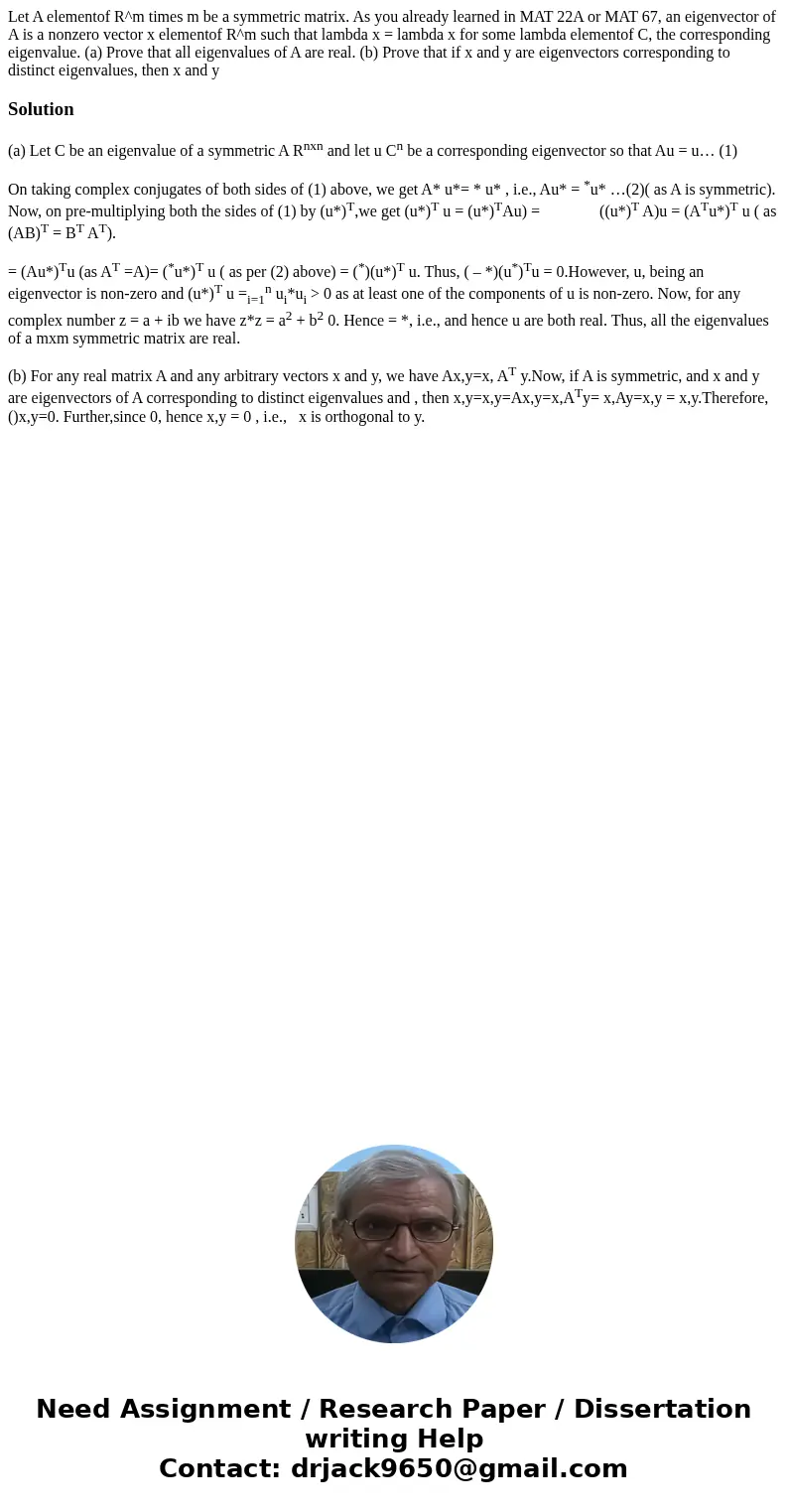Let A elementof Rm times m be a symmetric matrix As you alre
Solution
(a) Let C be an eigenvalue of a symmetric A Rnxn and let u Cn be a corresponding eigenvector so that Au = u… (1)
On taking complex conjugates of both sides of (1) above, we get A* u*= * u* , i.e., Au* = *u* …(2)( as A is symmetric). Now, on pre-multiplying both the sides of (1) by (u*)T,we get (u*)T u = (u*)TAu) = ((u*)T A)u = (ATu*)T u ( as (AB)T = BT AT).
= (Au*)Tu (as AT =A)= (*u*)T u ( as per (2) above) = (*)(u*)T u. Thus, ( – *)(u*)Tu = 0.However, u, being an eigenvector is non-zero and (u*)T u =i=1n ui*ui > 0 as at least one of the components of u is non-zero. Now, for any complex number z = a + ib we have z*z = a2 + b2 0. Hence = *, i.e., and hence u are both real. Thus, all the eigenvalues of a mxm symmetric matrix are real.
(b) For any real matrix A and any arbitrary vectors x and y, we have Ax,y=x, AT y.Now, if A is symmetric, and x and y are eigenvectors of A corresponding to distinct eigenvalues and , then x,y=x,y=Ax,y=x,ATy= x,Ay=x,y = x,y.Therefore, ()x,y=0. Further,since 0, hence x,y = 0 , i.e., x is orthogonal to y.

 Homework Sourse
Homework Sourse